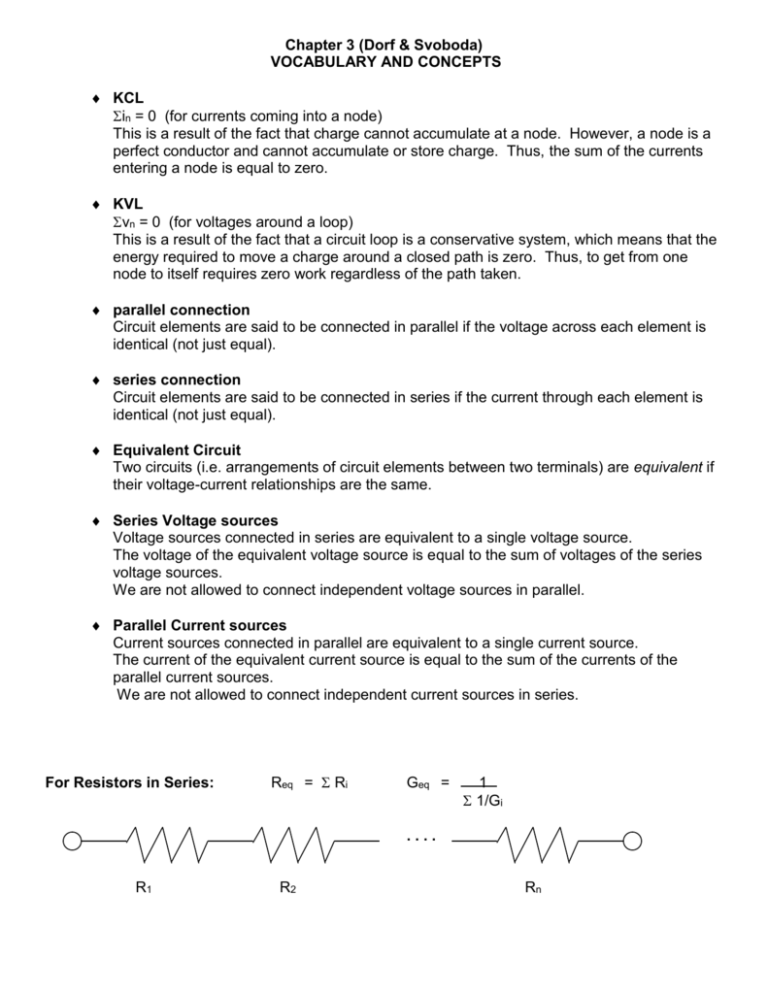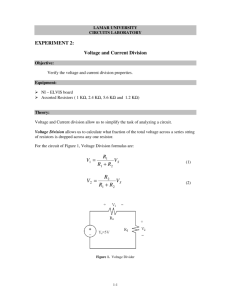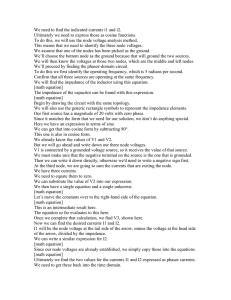Chap 3 Resistive Circuits
advertisement

Chapter 3 (Dorf & Svoboda) VOCABULARY AND CONCEPTS KCL in = 0 (for currents coming into a node) This is a result of the fact that charge cannot accumulate at a node. However, a node is a perfect conductor and cannot accumulate or store charge. Thus, the sum of the currents entering a node is equal to zero. KVL vn = 0 (for voltages around a loop) This is a result of the fact that a circuit loop is a conservative system, which means that the energy required to move a charge around a closed path is zero. Thus, to get from one node to itself requires zero work regardless of the path taken. parallel connection Circuit elements are said to be connected in parallel if the voltage across each element is identical (not just equal). series connection Circuit elements are said to be connected in series if the current through each element is identical (not just equal). Equivalent Circuit Two circuits (i.e. arrangements of circuit elements between two terminals) are equivalent if their voltage-current relationships are the same. Series Voltage sources Voltage sources connected in series are equivalent to a single voltage source. The voltage of the equivalent voltage source is equal to the sum of voltages of the series voltage sources. We are not allowed to connect independent voltage sources in parallel. Parallel Current sources Current sources connected in parallel are equivalent to a single current source. The current of the equivalent current source is equal to the sum of the currents of the parallel current sources. We are not allowed to connect independent current sources in series. For Resistors in Series: Req = Ri Geq = 1 1/Gi .... R1 R2 Rn For Resistors in Parallel: Req = Geq = Gi 1 1/Ri . . . . . R1 R2 Rn . . . . . Voltage Division: vi = Ri v = Ri 1/Gi v 1/Gi . . . . R1 R2 Rn v Current Division: ii = Gi Gi i = 1/Ri i 1/RI ..... i R1 R2 Rn .....











